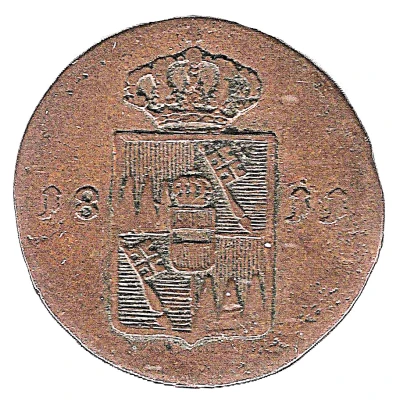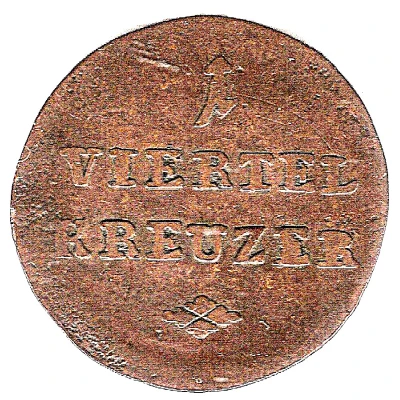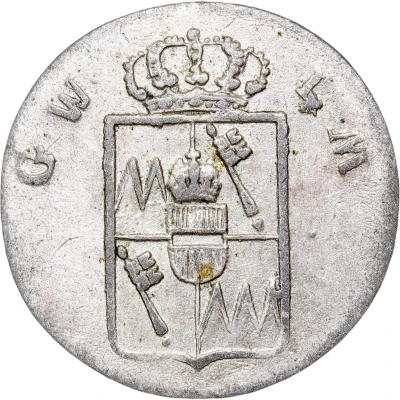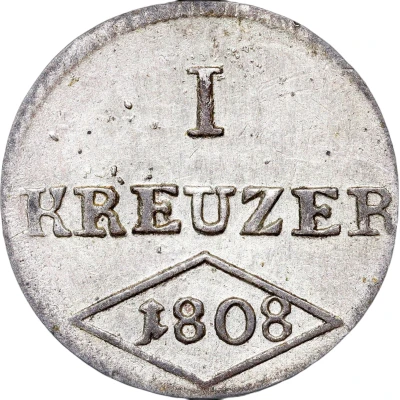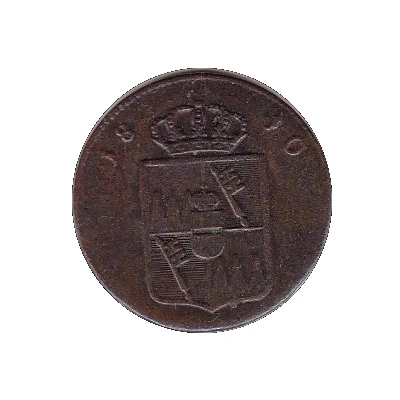
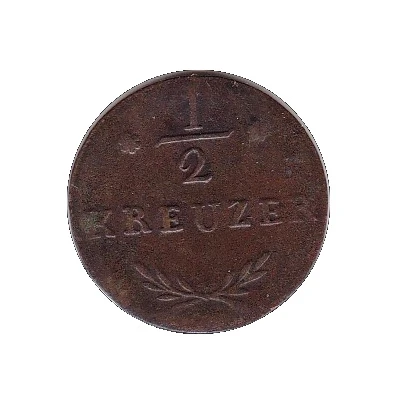

½ Kreuzer - Ferdinand
| Copper | 3.9 g | 23 mm |
| Issuer | Grand Duchy of Würzburg (German States) |
|---|---|
| High duke | Ferdinand I (1806-1814) |
| Type | Standard circulation coin |
| Years | 1810-1811 |
| Value | ½ Kreuzer (1⁄288) |
| Currency | Thaler (1806-1814) |
| Composition | Copper |
| Weight | 3.9 g |
| Diameter | 23 mm |
| Thickness | 1.25 mm |
| Shape | Round |
| Orientation | Medal alignment ↑↑ |
| Demonetized | Yes |
| Updated | 2024-10-05 |
| Numista | N#19138 |
|---|---|
| Rarity index | 63% |
Reverse
Two crossed branches
Script: Latin
Lettering:
1/2
KREUZER
Edge
Plain
Interesting fact
One interesting fact about the ½ Kreuzer coin from the Grand Duchy of Würzburg is that it was minted during a time of great economic and political change in Europe. The coin was issued in 1810-1811, just a few years after the Napoleonic Wars had ended, and the German States were in the process of reorganizing their currencies and economies. The ½ Kreuzer coin was a new denomination that was introduced during this time, and it was intended to help simplify trade and commerce in the region. Despite its small denomination, the coin was made of copper, which was a valuable resource at the time, and it featured an image of Ferdinand, the ruler of the Grand Duchy of Würzburg, on one side. Today, this coin is a rare and valuable collector's item, and it serves as a reminder of the complex history and economic changes that took place in Europe during the early 19th century.
